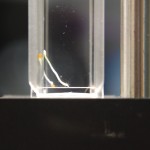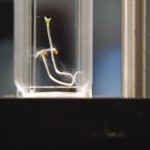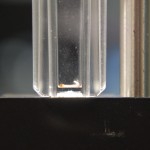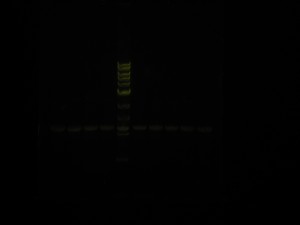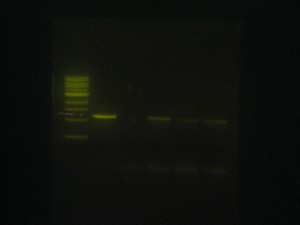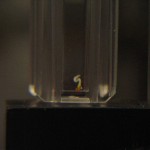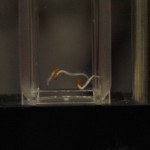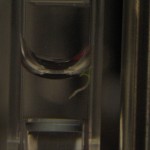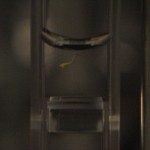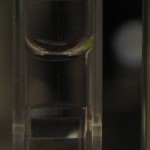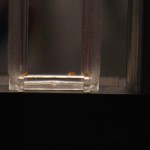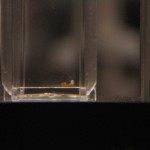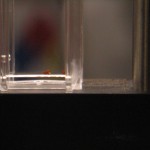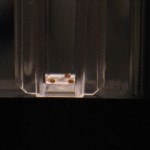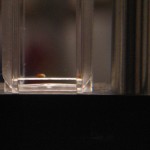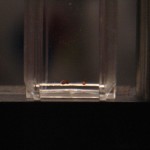A main focus of the lab is to examine the effects of D2O on the kinesin motor protein. Andy Maloney (now Dr. Maloney) spent quite a bit of time perfecting an experiment known as the gliding motility assay which allows an experimenter to study kinesin processivity by analyzing microtubule movement. Microtubules are relatively long protein filaments that kinesin has the ability to “walk” on which it does to carry cargo to various locations of a cell.
Below is a video of the gliding motility assay. Since kinesin molecules are too small to be resolved we actually depend on seeing the microtubules (which are in turn only visualized because of fluorescent dye proteins. What we are seeing below is that the microtubules (squiggles) are being propelled by the kinesin.
The reason that I mention this is because Andy used these experiments to determine if D2O affected kinesin movement at all. Initial results looked promising because it appeared kinesin would push the microtubules slower than identical experiments in regular DI water. It turns out that the decrease in speed could be related to the increased viscosity of deuterium oxide.
Despite this, Dr. Koch hypothesizes (based on introductory reports by Gilbert Lewis, a very popular name on this blog, and others regarding life in general) that D2O can stabalize kinesin. What do I mean by this? Well proteins in general don’t retain their shapes forever. There is some probability that a protein can denature (unfold) and this is expedited by certain cellular conditions (temperature, time, function, pH, charge, etc.). So it is believed that the inclusion of D2O can affect these conditions to ensure the “survival” of the protein. Currently kinesin suspended in buffer has a relatively short shelf life (but I’m not familiar with the lifetime). This would be very useful for use in the lab when chemicals, proteins, etc are stored for long term use.
We have proposed a couple of experiments that may help determine if deuterium oxide does indeed affect the storage life of kinesin (and perhaps other proteins/enzymes). The first is to detect aggregation which happens when proteins unfold and stick together to form large clumps of amino acids. The second experiment would involve detecting decreasing kinesin activity over time possibly through ATP hydrolysis (ATP turning into ADP+P).
Over the next few weeks (months?) I will be exploring these avenues. I have a slight head start on experiment 1 because an REU student named Kenji Doering spent the summer in our lab and explored the possibility of D2O affects on stability with ovalbumin which is a protein from egg whites. This will of course be the topic of my next post (or two) and I will be posting some rather interesting data from those experiments and some others.

